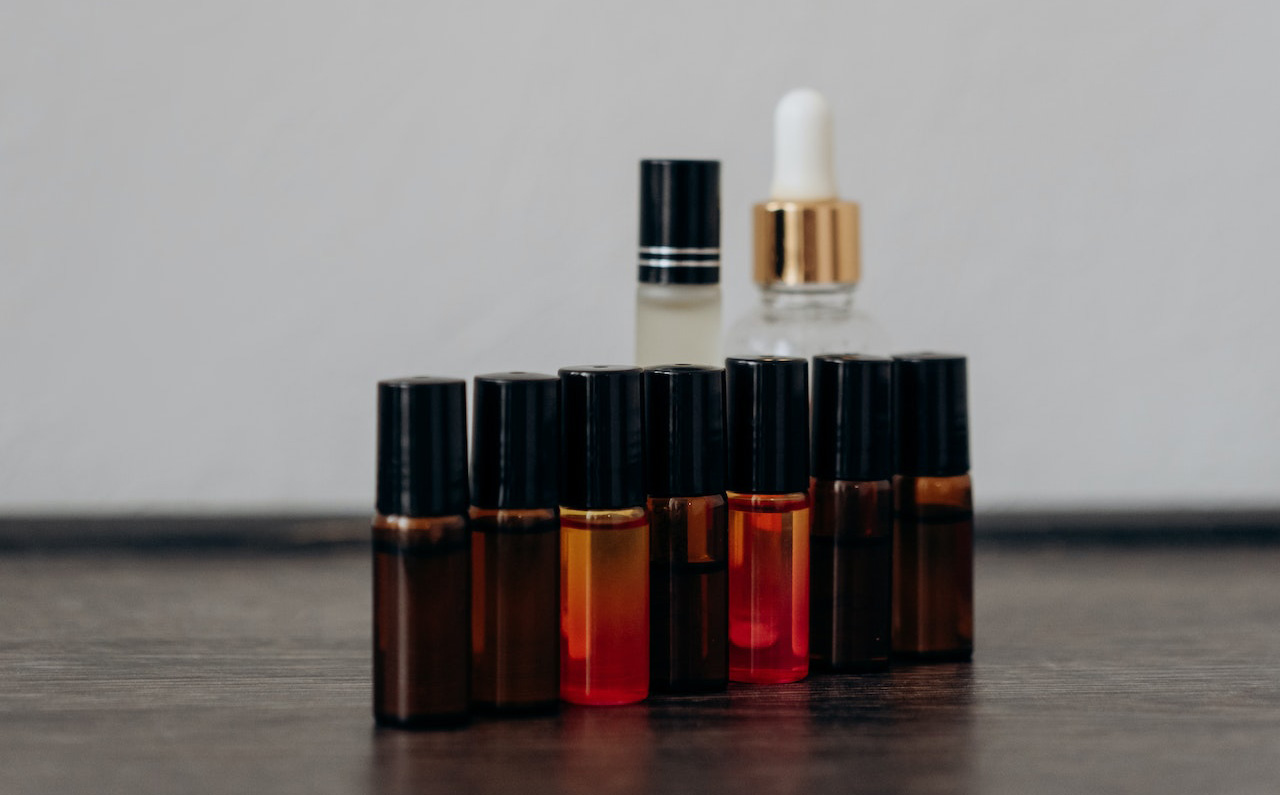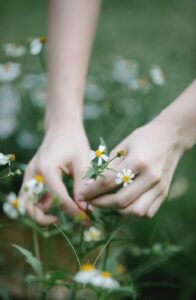How to Make Your Own Herbal Oils and Ointments: A Step-by-Step Guide
Creating your own herbal oils and ointments can be a great way to harness their natural healing powers.
Whether you want to soothe sore muscles, end dry skin, or speed healing, herbal oils and ointments are a natural and effective solution.

Herbal Oils and Ointments – A Simple Process
Step 1: Choosing your herbs
The first step in creating herbal oils and ointments is choosing the herbs you want to use and why. There are a plethora to choose from.
The best herbs for herbal oils and ointments are those that have strong medicinal properties, such as lavender (1), chamomile (2), calendula (3), comfrey (4), arnica (5), and St. John’s Wort (6). (For more information on each of these, see the “Using Your Oils and Ointments” section below.)
Herbal oils and ointments for harnessing the healing power of nature!
→ Making Herbal Oils
To make herbal oil, you’ll need to infuse the herbs in a carrier oil, such as olive oil, coconut oil, or jojoba oil.
Place the dried herbs in a jar and cover with enough oil to completely submerge them.
Let the jar sit in a sunny spot for a few weeks, shaking it occasionally, until the oil takes on the scent and properties of the herbs.
Strain the oil through cheesecloth or a coffee filter and discard the herbs.
→ Making herbal ointments
To make an herbal ointment, you’ll need to melt beeswax and combine it with your herbal oil.
Beeswax is a natural thickener and helps to create a smooth, spreadable texture.
The amount of beeswax you need will depend on the consistency you want for your ointment.
Start with 1-2 tablespoons of beeswax per cup of oil and adjust as needed.
Heat the beeswax and oil in a double boiler until melted, then pour into jars and let cool.
→ Using Your Herbal Oils and Ointments
Herbal oils and ointments can be used in a variety of ways, depending on their intended purpose.
1. Lavender Oils and Ointments
An herb that stands out for its versatility and potential for therapeutic benefits is lavender.
This fragrant purple plant has been used for centuries in both culinary and medicinal applications.
As an herb, Lavender is well-known for its calming properties and is commonly used in aromatherapy to promote relaxation and reduce stress.
When used in an oil or ointment, Lavender can also have anti-inflammatory and analgesic effects, making it a useful tool in alleviating muscular pain and headaches.
So, whether you’re looking to create a relaxing massage oil or a soothing balm to ease muscle tension, Lavender is a versatile and valuable herb to include in your herbal oil and ointment repertoire.
2. Chamomile
When it comes to creating your own herbal oils and ointments, chamomile is a versatile and valuable herb.
This soothing plant can be used topically to ease the discomfort of minor skin irritations such as rashes and burns.
Chamomile oil is known for its anti-inflammatory properties, making it a useful addition to a massage oil blend for sore muscles.
Chamomile is definitely an herb to keep on hand in your herbal medicine kit.
3. Calendula
Calendula, a member of the daisy family, is a popular herb to include in these homemade creations. Its bright, vibrant yellow and orange petals are full of healing properties, making it a sought-after ingredient in many natural products.
Calendula is believed to have anti-inflammatory, antifungal, and antibacterial properties, which make it a great addition to ointments for skin irritations and cuts.
Additionally, its calming properties make it a popular choice for use in aromatherapy. So when you’re choosing your herbs, consider using Calendula for its many beneficial properties.
4. Comfrey
Comfrey, also known as “knitbone,” is a popular herb for use in these preparations.
It has been traditionally used for centuries for its anti-inflammatory, analgesic, and healing properties.
Comfrey is especially useful for treating bruises, sprains, and strains, as it helps to speed up the healing process and reduce pain and inflammation.
The herb is also effective in treating skin conditions such as eczema, psoriasis, and minor burns.
Incorporating comfrey into your homemade herbal oils and ointments would be a great addition to your collection.
5. Arnica
When it comes to making herbal oils and ointments, arnica is a highly valued herb that is known for its many uses.
One of the most popular uses of Arnica is as a natural pain reliever, making it a great addition to any herbal remedy kit. It can be used topically to alleviate various types of discomfort, including sore muscles, joint pain, and even bruising.
Arnica is rich in anti-inflammatory compounds, which work to reduce swelling and inflammation in the affected areas of the body.
Arnica should definitely be on your list of go-to herbs. Not only is it effective, it is also a great option to have in your natural remedies kit.
6. St. John’s Wort
St. John’s Wort, a yellow-flowered plant that can be found in many parts of the world, is a popular ingredient in homemade herbal oils and ointments due to its numerous healing properties.
Often used for its anti-inflammatory and pain-relieving abilities, St. John’s Wort has also been praised for its ability to promote healing of minor wounds, burns, and bruises.
For example, lavender oil can be used topically to soothe burns and insect bites, or added to a warm bath to promote relaxation.
Calendula ointment can be applied to dry, cracked skin or used as a baby diaper rash cream.
TIP: Always test a small area of skin first to ensure you don’t have an allergic reaction, and avoid using oils and ointments internally unless directed by a qualified healthcare professional.
Where to get your herbs
You can grow your own herbs, wildcraft them, or purchase dried organic herbs from a local health food store or online.
 What is Wildcrafting?
What is Wildcrafting?
Wildcrafting is an ancient herbal practice that entails harvesting wild plants for medicinal purposes.
Many herbal enthusiasts are turning to this age-old practice to create their own herbal oils and ointments.
What makes wildcrafting particularly special is the fact that this practice emphasizes sustainability and respect for nature.
It encourages people to get up close and personal with the natural world, to learn about the various plants that grow in their environment, and to develop skills that have been passed down through generations.
By integrating wildcrafting into your life, you can gain a deeper appreciation for the plants around you and create customized herbal remedies that work specifically for your needs.
With a little knowledge and willingness to experiment, anyone can embark on this journey and experience the wonders of wildcrafting.
Why Organic?
When making herbal oils and ointments, it’s especially crucial to ensure that the herbs used are organic.
Unlike conventionally grown herbs, organic herbs are grown without chemical pesticides, fertilizers, or genetically modified organisms.
This means that the herbs are free from harmful toxins that can be absorbed into the skin when making herbal oils and ointments.
Using organic herbs not only ensures that you are avoiding harmful chemicals, but it also supports sustainable farming practices.
So when crafting your own herbal remedies, be sure to choose organic herbs for a natural and effective solution.
Your Own Customized Blends
When it comes to blending herbal oils and ointments, the options are endless and can vary depending on the purpose of your oil or ointment.
For example, if you want to create a calming balm, you might try a combination of chamomile, lavender, and calendula.
Or, if you’re looking for an oil that can help with pain relief, you might blend together arnica, St. John’s wort, and ginger.
The great thing about making your own herbal remedies is that you can tailor each blend to your own needs and preferences. Don’t be afraid to experiment and find the perfect blend for you.
With a little bit of research and some experimentation, you’ll be making your own herbal oils and ointments in no time.
Making herbal oils and ointments is a rewarding way to explore the benefits of herbs.
By following these simple steps, you can create customized blends that suit your individual needs and preferences.
Remember to choose high-quality herbs and carrier oils, and experiment with different blends until you find the perfect mixture for you.
With a little time and effort, you can harness the healing power of herbs, and improve your health and well-being in a natural and sustainable way.

 What is Wildcrafting?
What is Wildcrafting?